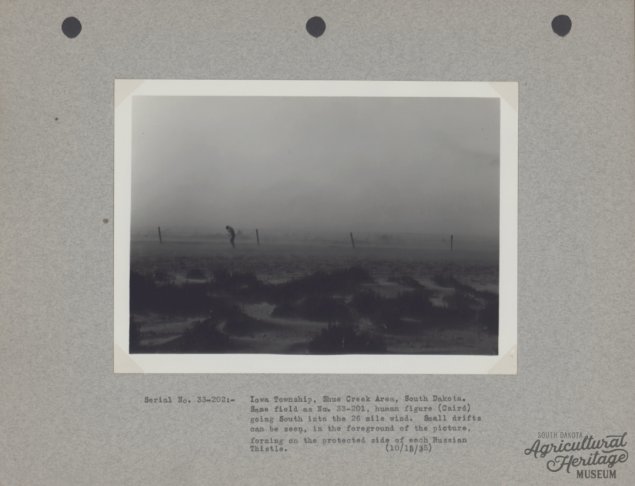
Today we have a photograph from the Joseph Hutton Collection. Joseph Hutton was a soil scientist and taught at SDSU starting in 1911. He brought a new concept that not all soil was the same and that different soils required different farming practices to be sustainable. A portion of his work and collection revolved around the dust bowl in South Dakota. This photo is dated Oct. 15, 1935. It was taken in Iowa Township, Shue Creek Area, Beadle County, South Dakota. In this photo there is a person who is walking against a dust storm. Scenes like this were common in South Dakota and other parts of the Midwest during the dust bowl. With record droughts each year, the depleted soil dried up and blew away in the wind. Because of the terrible conditions, farms and ranches could not survive and many people left and abandoned their property. You can learn more by visiting the museum and seeing our exhibit Drowning in Dirt: Joseph Hutton and the Dust Bowl.

